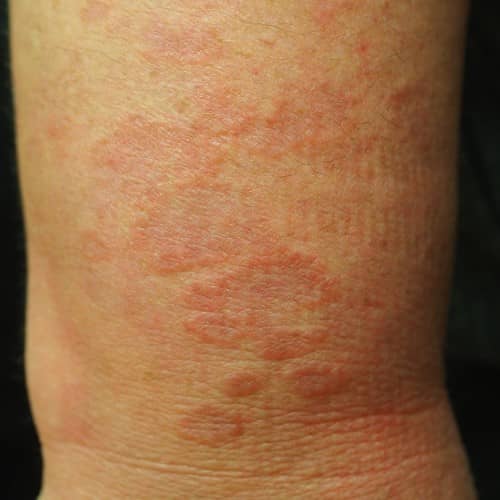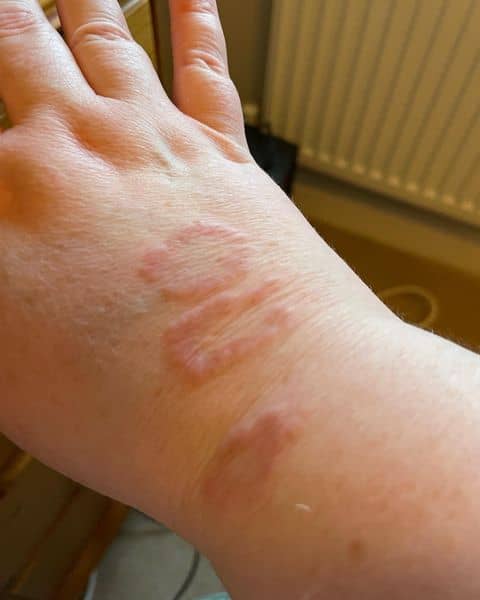Granuloma Annulare: Overview and Treatment Steps
Overview
The pathogenesis of granuloma annulare is not known and, for this reason, therapy is empiric. The effectiveness of therapy of granuloma annulare (GA) may be difficult to gauge because the spontaneous resolution of individual lesions or the entire disease process is common.

Initial Steps
- Prescribe a superpotent topical steroid to be applied to lesions in a thin film twice daily. Although GA is a dermal inflammatory disease, a substantial percentage of lesions will respond to this therapy within 2-4 weeks.
- In thin-skinned areas such as the neck, tacrolimus ointment 0.1% may be applied twice daily.
Alternative Steps
- Apply squares of corticosteroid-impregnated tape to lesions for 12-24 hours, or prescribe an intermediate-potency topical steroid (eg, triamcinolone acetonide 0.1% cream) under plastic wrap or plastic glove occlusion overnight for 2 to 3 weeks.
- Inject triamcinolone acetonide final concentration 2.5-5.0 mg/cc using a 30-gauge needle into the lesions in the dermis or subcutaneous tissue. Injections can be repeated every 3-4 weeks.
Subsequent Steps
In the event that the patient does not respond or lesions rapidly recur, the following have been tried with some success. These treatments are usually reserved for patients with the symptomatic generalized or ulcerating disease.
- Systemic retinoids, isotretinoin (40-80 mg daily), and acitretin (25-50 mg daily) may be attempted.
- Oral or bath PUVA (psoralen plus UVA therapy) may be effective for generalized lesions. Retinoids and PUVA may be combined (Re-PUVA)
- Hydroxychloroquine 200 mg twice daily or chloroquine 250 mg once daily.
- Tranilast 300 mg/day.
- Potassium iodide 5 drops of the supersaturated solution (SSKI) 3 times daily increasing to 10 drops 3 times daily, taken in a glass of water or citrus fruit juice, is effective in some patients, although lesions often recur following cessation of therapy.
- Prednisone 40-60 mg daily will lead to a rapid improvement in most cases; however, it is rare for systemic steroid therapy to induce a significant remission, and in fact, most patients have flares when still on unacceptable daily doses of systemic steroids (20 mg/day). Prednisone may be used as "rescue" therapy in severely symptomatic patients awaiting a response from another systemic agent.
- Defibrotide 400 mg/day.
- For refractory, severe cases, cyclosporine 5 mg/kg/day can be considered.

Pitfalls
- There may be an association between generalized, extensive GA, and diabetes mellitus in about 10% of cases. Localized GA may be associated with autoimmune thyroiditis in about the same percentage of women. If not recently evaluated, patients with these forms of GA should have the appropriate evaluations.
- The pitfalls of topical steroids, systemic retinoids, PUVA, and cyclosporine are described elsewhere.
- The pitfalls of oral potassium iodide therapy include brassy taste, burning mouth, increased salivation, runny nose, sneezing, and eye irritation. Salivary gland enlargement may occur. Diarrhea, gastric upset, anorexia, fever, and depression are reported side effects. Acne may appear or be exacerbated.
